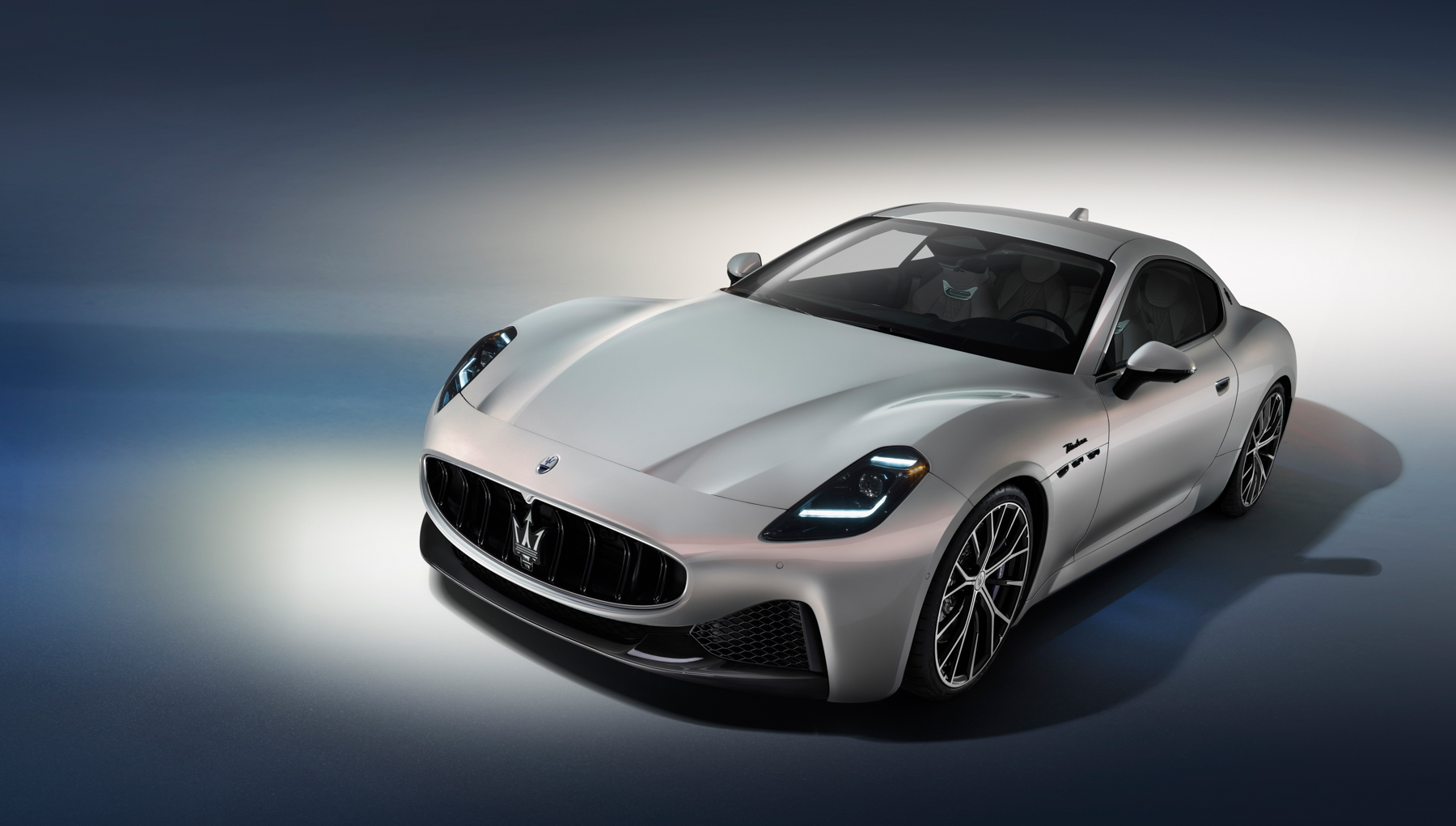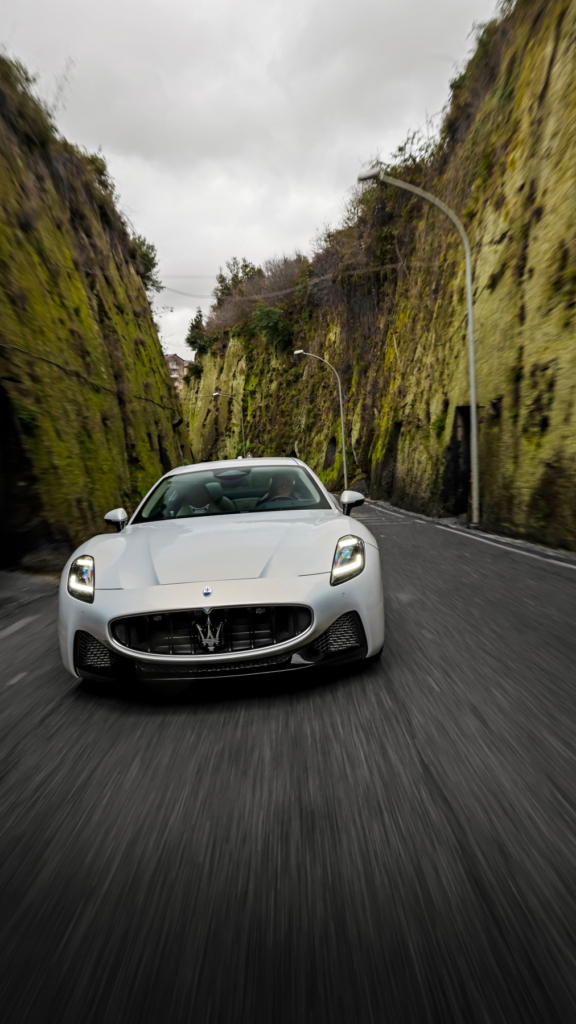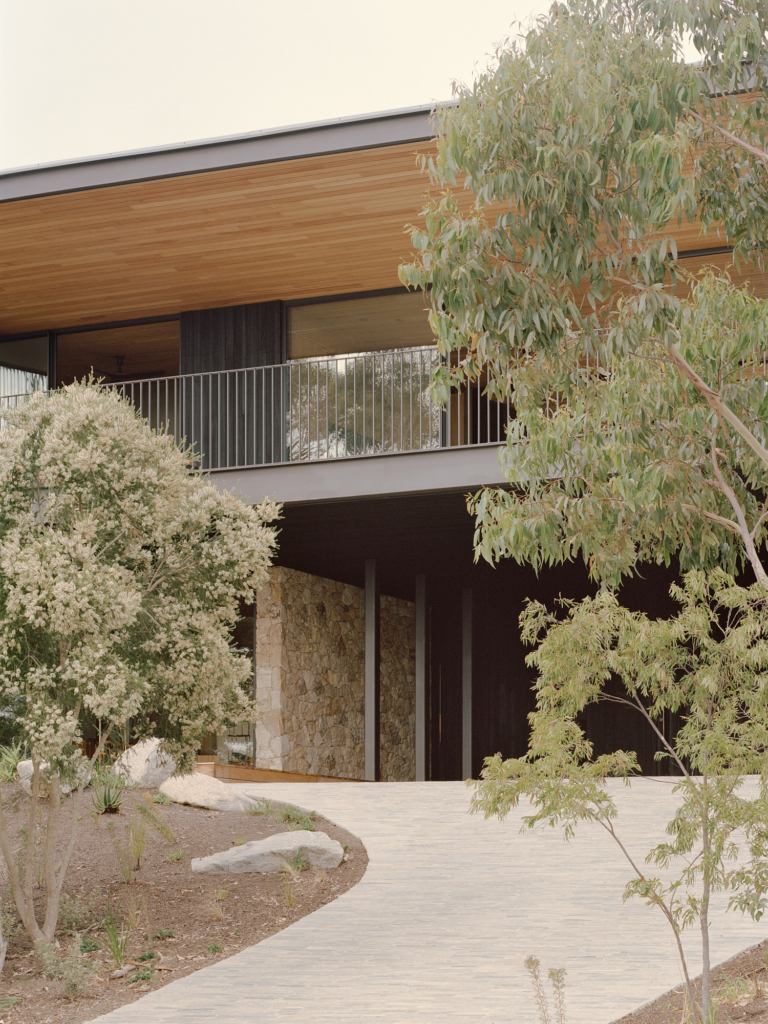
Handsome, elegant and freshly updated, the Modena marque’s relaunched flagship coupé might just be the most underrated GT on the road.
Maybe there’s a return to romance in the air or a rejection of the radical pragmatism and software-driven utility currently consuming the car industry. Maybe the yearn for the open road is the automotive equivalent of touching grass? Whatever may be driving its resurgence, it’s hard to overstate how much the grand tourer is having a moment.
Last issue, we took the mean Bentley Continental GT Speed for a spin in the Swiss Alps. Before that, we drove the soulful and newly updated Porsche Taycan across Tasmania. Just before this feature, you’ll have seen the new Jaguar concept, which will also manifest as a four-door grand tourer once its road-going sister car is revealed. And it’s not purely our preference at play; Aston Martin, Mercedes-Benz, Ferrari, McLaren and even Polestar have revealed new GTs in recent years, proving that the iconic and stylish goldilocks of performance cars, the vehicle designed purely for the journey, continues to capture imaginations.
While it may seem like ‘GT’ can be stamped onto the end of anything these days, a pure grand tourer must embody a sublimely balanced blend of performance, prestige, practicality and long-drive-happy lushness. While a few have tried, there’s no carmaker in the world with as much experience in the fine art of GT perfection as Maserati; 78 years to be exact. While Maserati didn’t invent the concept, it helped to move the needle forward in 1947 after noticing there were two choices a customer could make: race car or road car. “Why not both?” asked the Italians, resulting in the first Maserati GT, the A6 1500 Gran Turismo.
While it may seem like ‘GT’ can be stamped onto the end of anything these days, a pure grand tourer must embody a sublimely balanced blend of performance, prestige, practicality and long-drive-happy lushness.
Flashforward to 2007, when its modern-day descendant was born: the two-door GranTurismo, which, up until it ceased production in 2019, was the jewel in the crown of the Modenabased Trident. For 12 years, the GranTurismo enjoyed a stellar reputation as a sophisticated coupé. But, marred by older technology, it lost its swagger and aged out. Now, nearing 20 years since its launch, the handsome 2+2-seater has had an extensive overhaul to compete with the ever-widening and electrified landscape of the GT. Having slid under the radar over time, the car now sits in a somewhat paradoxical place: it’s a much-loved icon yet, in today’s climate, it is grossly underrated because, spoiler alert: it’s still got it.
The new GranTurismo arrives in three variants: the purely electrified GranTurismo Folgore, which will be available for order in Australia from mid-year; and two petrol variants, the Modena and the higher-performance Trofeo, which we test-drove for this issue. Gone is the Ferrari-developed 4.2-litre V8; in its place is the Nettuno 3.0-litre twin-turbo V6. Developed in-house by Maserati, it has plenty of technical bragging rights – and patents – attached to its efficiency, weight and emissions. But the Nettuno’s biggest flex is that when it debuted in the Maserati MC20 supercar, it was the first road-going engine to adopt specific Formula 1-derived technology via an innovative pre-chamber combustion system with twin spark plugs.
The GranTurismo not only speaks to the history of the GT’s racing-meets-road legacy, it also has a beauty of a performance engine. It’s engaging, charming, responsive and rev-happy, with plenty of power and torque (360kW and 600Nm in the Modena) and is almost as sonorous as its V8 relative, despite having lost a couple of cylinders. Tech-wise, the new-generation GranTurismo has had a total overhaul and is now equipped with all the safety and luxury accoutrement you’d expect from a prestige marque in 2025. Of note is a fantastic Sonus Faber premium audio system with up to 19 speakers, advanced adaptive tech with surround-view cameras and intelligent speed assist.
Those with an eye for detail might notice that the new generation of GranTurismo, as handsome as it is, doesn’t stray too far from the old. That’s intentional, according to Maserati’s chief designer, Klaus Busse, who has said that a key marker of the marque’s design philosophy is longevity. Italian made and designed, the coupé is understated but alluring, with muscular, sculptured fenders that sit on 21-inch wheels, a lovely long clamshell bonnet and a front grille that throws to the golden era of Maserati’s racing achievements.
“Proportion is so important for Maserati,” Busse pointed out upon its launch. “And of course, in a car like the GranTurismo, we were able to accomplish a magic dash-to-axle ratio, and this gets measured from the centre of the front wheel to the cut line of the front door.” This, he says, is where the magic lies. “We were able to achieve that, together with the packaging engineers in Modena. By putting the V6 behind the front axle, we were able to create this beautiful long, stretched, sculpted hood.”
In the real world, this understated styling makes the GranTurismo an excellent daily drive. It’s not so ostentatious that it draws unwanted attention, a realistic urban concern when it comes to street parking a $357,500 (plus on-road costs) luxury vehicle. However, it is beautiful enough that it will have you checking yourself out on reflective surfaces on repeat. Yes, we’re all tired of the phrase ‘quiet luxury’ but for all intents and purposes, this design ideology is the secret behind the GranTurismo’s well-established legacy as a beautiful Italian stallion and a formidable grand tourer made for the joy of the open road.







































